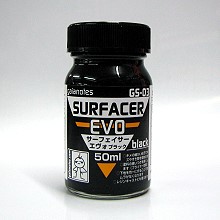
However, if a player equips it, there will still be a standard combat knife on your chest and the kukri will remain unused during assassinations. In Halo: Reach, the Security armor permutation for the right shoulder has a kukri on it.This can be seen in Theater: despite using a knife to assassinate your opponent, it still appears sheathed on your chest. When performing an assassination, a second knife spawns out of nowhere.

Frederic-104 possesses particular skill with combat knives, and it can be interpreted that he has a liking for their use.

Trivia īrowse more images in this article's gallery page. The blamite-bladed energy cutlass is an analogous weapon used by the Kig-Yar. The Sangheili sometimes use curveblades, which inspired the design of the Type-1 energy sword. Even the Covenant use knives the Jiralhanae use their own combat knives as well as a multitude of bayonet-like blades. As more modern times came about during the 21st century, combat knives became almost exclusively used for utility purposes in the field, and were only used as a weapon during desperate situations, simply due to the fact that they were impractical for use during combat in most situations due to firearms and other advanced weaponry.īy the 26th century, the UNSC still use knives in their operations, showing that such an easily accessible and created weapon and tool still runs strong even thousands of years later. Even after the invention of the firearm, knives were still used as bayonets for close-quarters-combat and in the event of an enemy's cavalry charge. Knives have been used in battle almost since the dawn of warfare, first as a sharp piece of rock, and then when metal proved effective during a period of time where projectile weapons were not readily available. Model 52 Navy knife: A large knife preferred by UNSC Navy special forces.MK 88 Ratio: A compact survival and utility knife commonly carried by UNSC and militia forces.The M11 combat knife is 365.8 millimeters in length and weighs 2 kilograms. These blades are extraordinarily sharp and retain their edge even after repeated use. When wielded by a Spartan operator, the blade can be thrust with force sufficient to penetrate energy shielding or hardened armor. Manufactured by Watershed Division since 2551, the M11 is constructed with hyper-dense metal alloys, making it nearly unbreakable. M11 combat knife: A combat knife designed and built for Spartans, and the standard close combat weapon of Spartan Operations.


Some Spartan-IVs keep their knives sheathed in a wrist compartment. The placement of the combat knife sheath varies depending on the combat uniform and individual loadout, and may be kept, for example, on the shoulder with the handle pointing downward, sideways on the lower back, or on the side of the boot. Roland-B210, a member of the SPARTAN-III program's Headhunters division, also used a custom combat knife. Emile-A239 used a large kukri for his weapon of choice. Major Faison had a very large knife that he kept sheathed at his ankle, with the words "Bug-Hunter" engraved on the blade. Some soldiers in service with the UNSC carry a combat knife of their own design or choice. Modern UNSC combat knives are made of strong enough material to pierce a Spartan's helmet, and the hull of a Lich. The Spartan-IIIs' standard-issue combat knife features a self-sharpening blade made of a hyperdense material. One version of the UNSC's multi-purpose combat knife has a 20-centimeter (7.9 in) blade made of high carbon steel, an anti-flash, non-reflective titanium carbide coating, edge coated for corrosion resistance and is 43.3 centimeters (1 ft 5.0 in) long when sheathed.


 0 kommentar(er)
0 kommentar(er)
